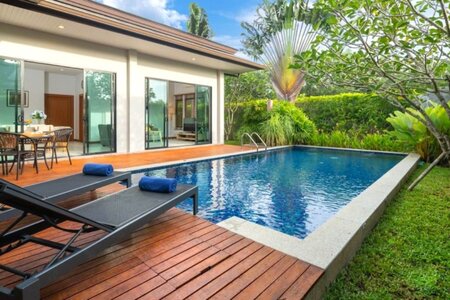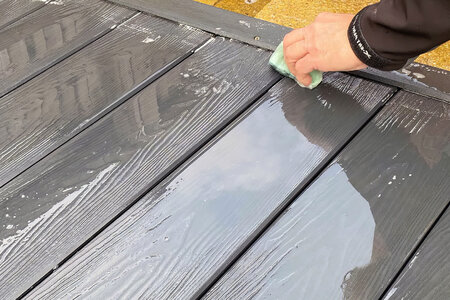
How To Clean And Maintain Composite Decking
Learn how to clean and maintain your composite decking with our guide. Follow our easy steps and tips for a brand new look. Contact Final Touch Carpentry and Constructions for expert help.
Read Full StoryThere are plenty of options regarding the appropriate decking material.
As a homeowner, you’ll want to invest in a long-lasting, beautiful deck made possible through quality decking materials. Not only is a quality deck aesthetically pleasing, but it also serves as an extended outdoor living space.
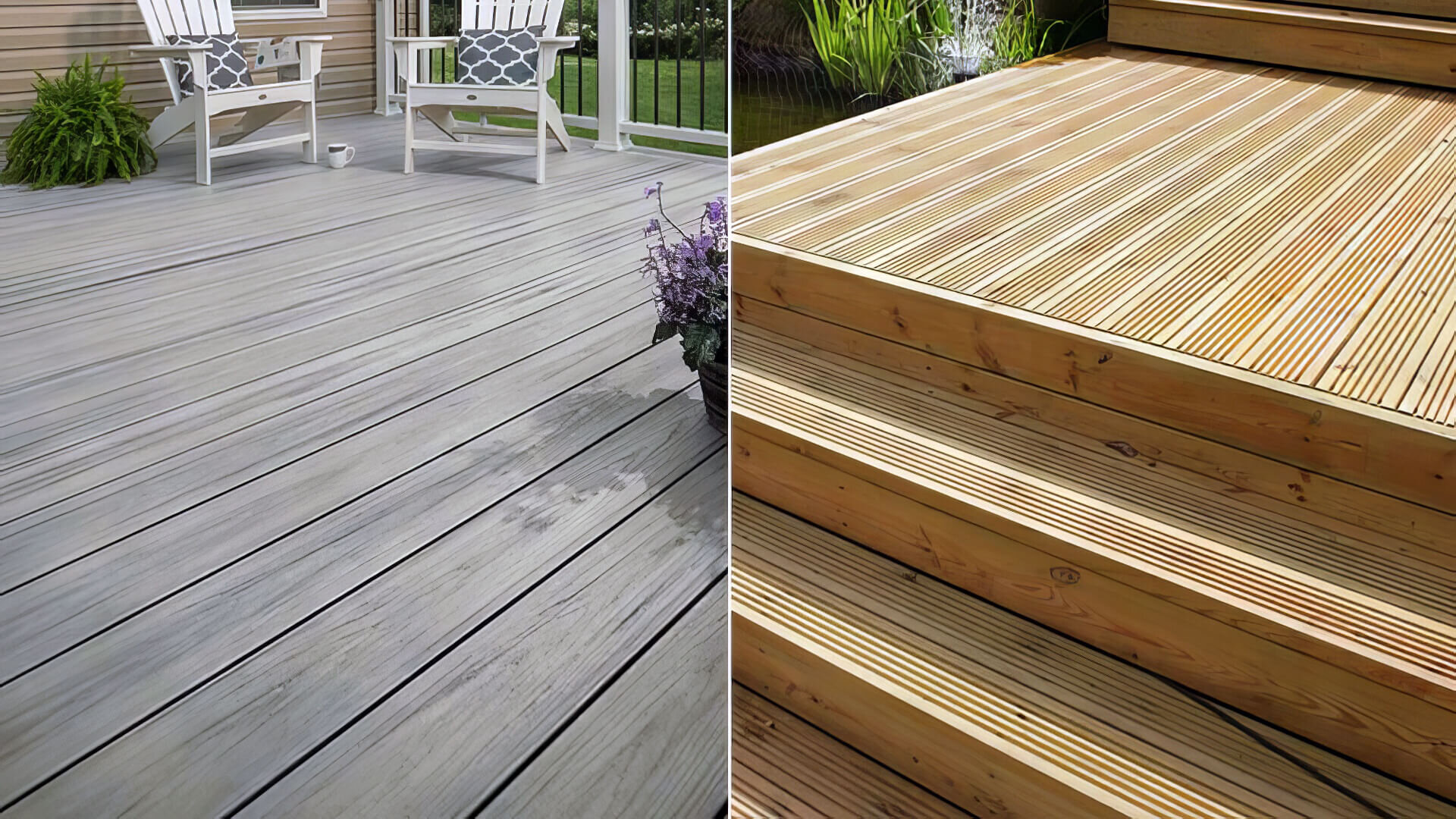
Even with a cursory glance at the market, you’ll find that composite decking and timber decking are two of the most popular decking options. Among the two, timber decking is the old-school decking option, while composite decking is the newcomer.
Choosing between the two can be befuddling, especially since both are durable and visually attractive. And since there is some overlap between wood decking and composite decking features, it may leave you scratching your head.
So, let’s compare the two and see which can be your better decking option!
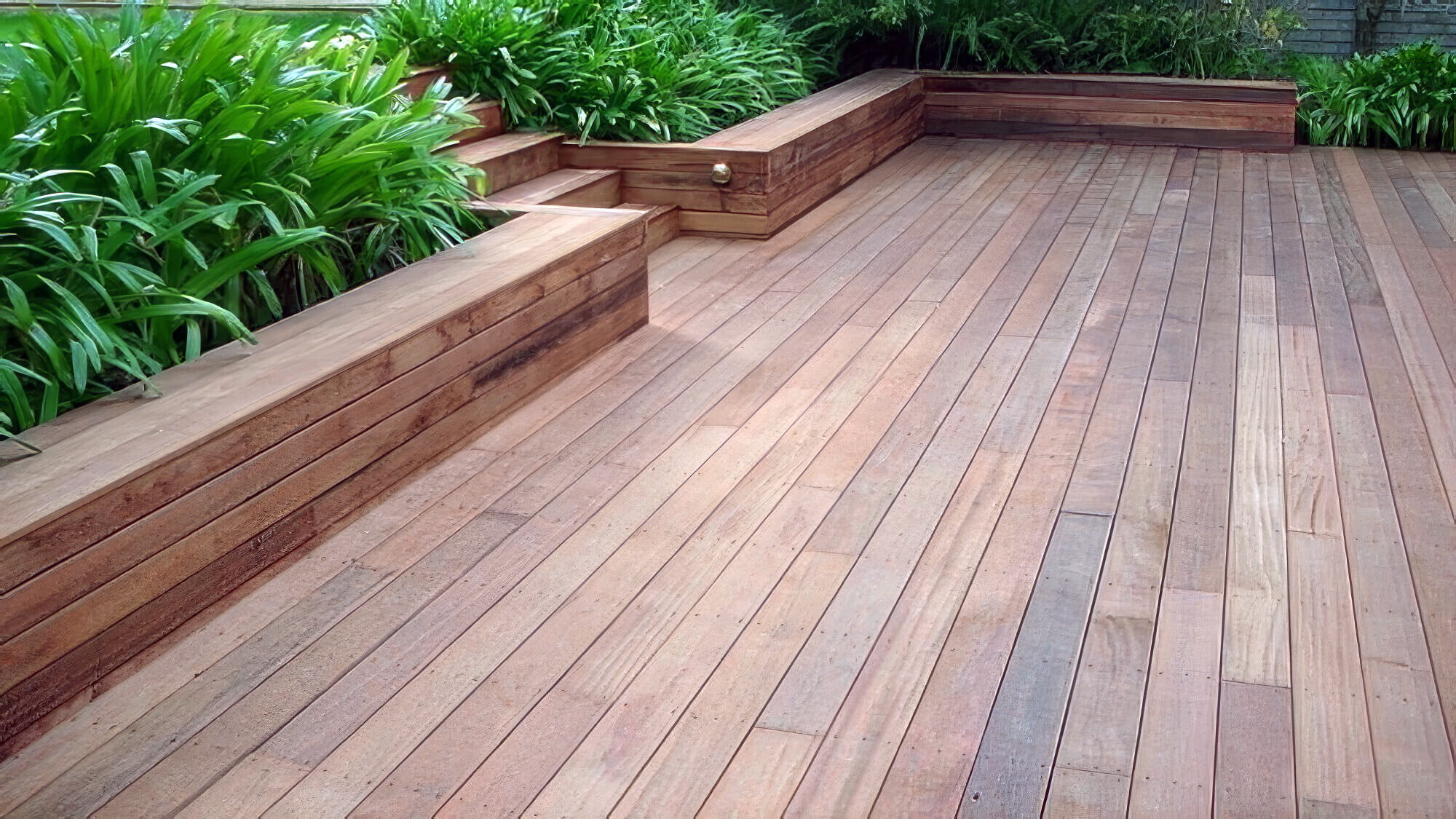
Timber decking is a material used to construct outdoor decks through hardwood and softwood. This combination affords the decking type a naturally rustic appearance that is unique to it.
Cedar, ipe, and teak are some of the more prominent hardwood species used in wood decking construction. These timber species naturally resist moisture, mould, and mites, making your wood deck strong and long-lasting.
The softwood species, including pine or fir, combined with hardwood, contrast the construction nicely. Something worth noting here is that softwood species are less strong and more durable than hardwood. They can be prone to rotting and warping from moisture exposure and humidity, negatively affecting their longevity.
One of the greatest advantages of timber decking from a construction standpoint is the ease of working with natural wood. You can cut, shape and refine timber products to your heart’s content, making it a versatile choice as deck construction material.
Due to this versatility, renovations and modifications are easy to make when needed. Depending on your budget, you can stain or paint to refresh its look or give it a completely new look.
Lastly, a certain warmth to real wood gives timber decking a natural and rustic appearance, which many prefer over artificial materials.

Wood decking can require much maintenance if softwood or low-quality hardwood is used as the primary material. These decks must be painted once a year and may start showing their age within ten years of construction. Maintaining them can quickly become a hassle.
If you’re environmentally conscious, it’s worth noting that wood decking encourages deforestation. And while trees are a renewable resource, they don’t grow back quickly, making every felled tree a net loss in terms of sustainability.
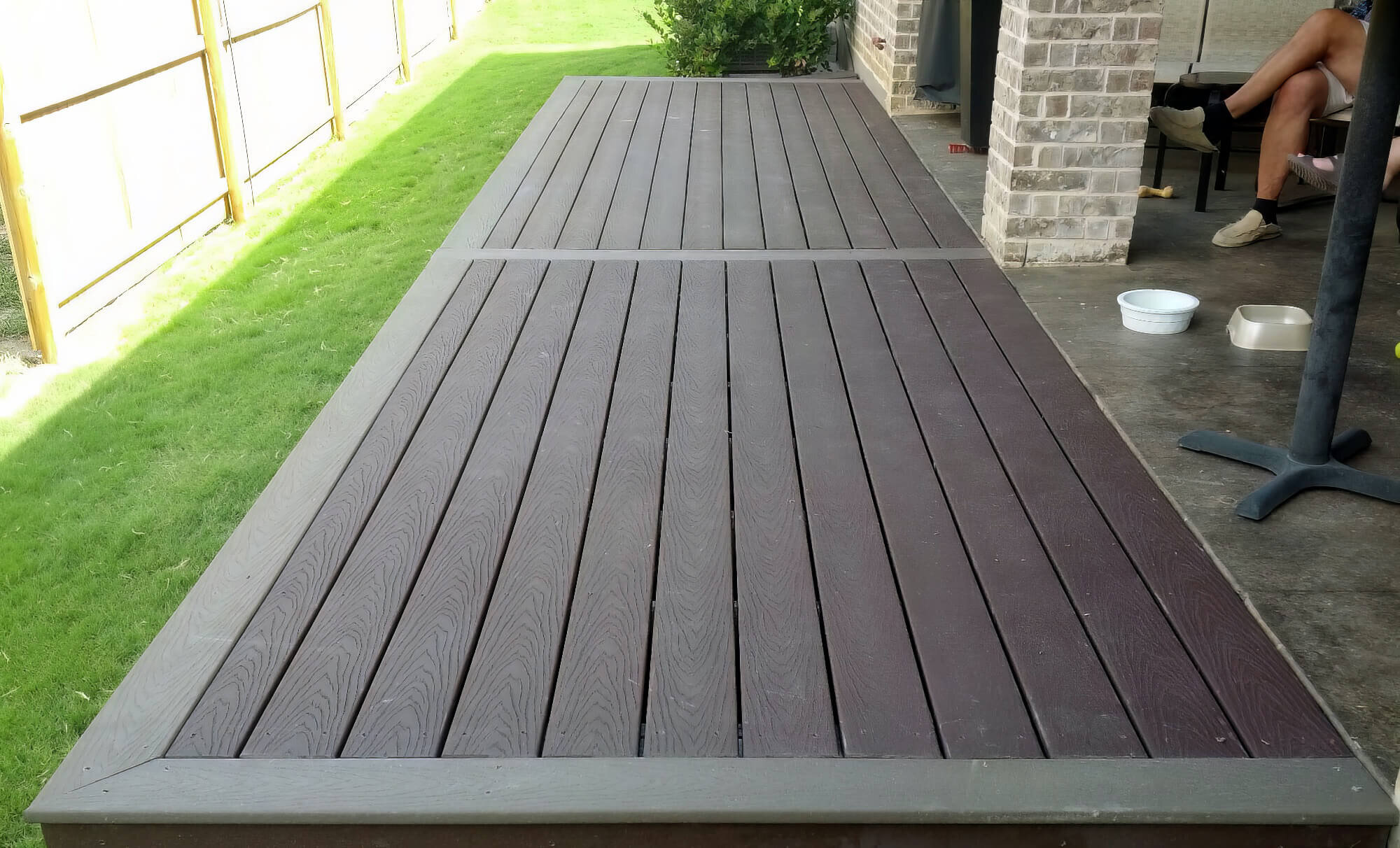
This decking type has only risen in popularity recently, thanks to its low cost and minimal maintenance requirements. Further, composite decking is made using either a polymer or a blend of wood flakes and plastics with a structural protection layer.
An exciting aspect of composite decking is how it utilises high-performance recycled material to create decking boards. The blend of recycled plastic and wood makes it highly durable in harsh weather conditions at a budget-friendly price.
As for aesthetics, composite decking has you covered here as well. Many composite decking brands can replicate the look and feel of traditional wood, making it nearly completely indistinguishable from the real thing.
Composite decking isn’t limited to a single deck-building style and can be fully customised to fit your needs. With an easy installation process, you can choose between several styles, from wooden and rustic to something more unique.
Secondly, composite decking eliminates the need for annual maintenance, only requiring spot cleaning treatment for dirt or pollen removal. Since it is primarily made of plastics, the material won’t show any age or signs of fading.
Lastly, composite boards are highly resistant to all forms of damage, including U.V., moisture damage, insect damage, mould, and mildew. You won’t see composite deck boards warp, crack or split like regular wood decks, adding to their durability.

Renovations are challenging with composite decking due to the simple fact that the boards cannot be stripped back and painted over. So, if you ever feel that the deck’s look doesn’t feel right, you might be unable to do much about it.
On average, composite decking can be quite expensive upfront. While this is mitigated somewhat by its durability, the materials can still set you back quite a bit.
Due to the blend of plastics and wood used in composite boards, composite decking is generally more durable than a traditional timber deck. Modern composite decking uses a hard plastic shell, which improves its durability by a wide margin and makes it highly damage-resistant.
High-quality timber decking costs more than any other type, while medium to low-quality composite decking costs more than its timber equivalent.
The price difference between wood-plastic composite decking and its equivalent wood decking can be about 15-20%. Regarding value for money, composite decking will give you a greater bang for your buck despite the higher initial cost.
Even though the aesthetics of composite decking are improving every day, the look and feel of traditional wood make for a more regal aesthetic. Besides, timber decking can be painted over to match your home during renovations, while composite decking can’t.
While it comes down to personal tastes, a timber deck may be more visually striking overall.

Thanks to the materials used in its construction, composite decking doesn’t need major maintenance or renovation. So, it wins in this category, as timber decking needs more maintenance overall.
Natural timber decking is made using a renewable resource that can’t be replenished quickly. Composite decking uses a blend of materials that contain plastics.
An argument can be made that composite decking is more environmentally friendly since the plastic used in the boards is primarily recycled. That said, once the decking reaches the end of its life cycle, it can be challenging to recycle it once more.
The argument for timber decking being the more environmentally friendly choice has a more reasonable foundation. After all, recycling wood is much easier than recycling a blend of plastics.
Composite decking offers high durability and low maintenance requirements, while timber decking is more sustainable. Looking at specifications alone, composite decking is the better option but a little more expensive.
Furthermore, composite decking may be a better option if you live in an area with frequent or humid rainfall. Moisture damage can weaken wooden decks over time, which can spell trouble in the long run.
But if environmental sustainability concerns you, timber decking is the better option. Its natural beauty and modification options make it more desirable.
Longevity and appearance play significant roles in choosing a particular deck style. Due to their highly subjective nature, choosing between composite and timber decking concerns personal needs and preferences.
Regardless, you can use composite decking if you need a safe decking type. But timber decking is also an excellent option if you live in a dry climate and are concerned about environmental sustainability.
No matter the decking type you choose, you will need the services of an expert to install it. For this, you can rely on Final Touch Carpentry & Construction. We can handle all your decking needs, including installations, repairs, renovations, etc. So, get in touch with us today!
Learn how to clean and maintain your composite decking with our guide. Follow our easy steps and tips for a brand new look. Contact Final Touch Carpentry and Constructions for expert help.
Read Full StoryAre you looking for more information about Fibre Cement Decking and whether it is the right choice for your deck project? Learn more by reading our detailed guide.
Read Full StoryInterested in installing a new deck or renovating your current pool area? Learn what decking material is the best for around your backyard swimming pool in our guide!
Read Full Story

